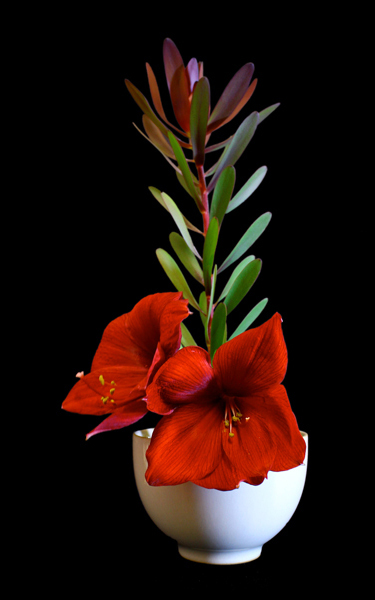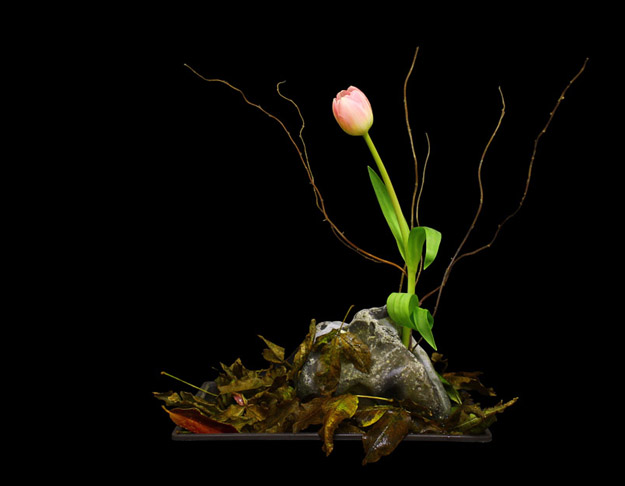
Whenever I tell people that I’m into ikebana, they usually stare at me blankly. I can almost see the thought bubble appear overhead. ‘Is ikebana that karaoke trio that Jed, my third-cousin-once-removed, told me about?’
Other times people, slightly braver, do ask, “What is ikebana? I have never heard of it.”
Ikebana is a Japanese art – the Zen of flower arranging.
In fact, ikebana is an ancient practice that has been passed down through generations over hundreds of years. Compared to a traditional Western bouquet that is bursting with color, flowers crammed together like sardines, an ikebana arrangement is a single flopping fish out of water, a minimal and sometimes-strange scene that catches us by surprise. Western flower arranging can certainly be stunning and beautiful, an art in its own right, but ikebana attempts to direct the attention of the admirer in a slightly different way.
By making the space between the flowers as important as the flowers themselves, the ikebana artist brings the natural beauty and character of each and every flower to its height. Less definitely becomes more. Everything counts when there is nowhere to hide; you just can’t get away with the laziness of stuffing a few extra flowers in. If you are sloppy at all in your arrangements, you can guarantee that it will show.

Hence, the importance – not only of practice – but also of caring.
In the famous words of D.T. Suzuki, “the art of flower arranging is not, in its truest sense, an art, but rather the expression of a much deeper experience of life.” A deeper experience that is marked by Love, if nothing else.
So what else do you need to know if you think you might want to try ikebana yourself. For one, you’ll need some special equipment. Ikebana requires the use of special spiky “frogs”, or kenzans, which sit in the bottom of your vessel. Stems are held upright by placing them securely in the kenzan. You’ll also want to get a very sharp pair of cutters, or hasami, that you will use to cut your stems. You’ll need some guidance on how to use this equipment, so a book or someone who knows how should teach you.
There are exact rules that specify the heights, angles of placement, and the number of different plant materials in a given arrangement. The artist is, of course, free to break these rules, but the path to true mastery may be guided by the words of Sofu Teshigahara, “from formality comes freedom.” I suppose this is to remind us that discipline is always one of those necessary evils we have to cultivate in ourselves to succeed.
I have not had a formal teacher; Only my mother, who gave me my first “frog”, and my books and my eye to guide me.
The first book I read was Ikebana, A Fresh Look at Japanese Flower Arranging, by Diane Norman and Michelle Cornell. In their introduction, they write, “In the West, ikebana has sometimes been wrongly categorized as merely flower arranging, but doing so misses out on the subtlety, richness, and depth of this ancient discipline. Through the arrangements that we create, ikebana strengthens our connection with nature, is a powerful means of self-expression and develops our ability to see in new ways.” Nothing could sound more appealing to me than that. Their book also contains a wealth of information about the history of ikebana, some magnificent photos, and everything you need to know to do several different kinds of arrangements.
I have also had the chance to share ikebana with some of my friends. Below is one of my favorite arrangements. I did it together with my friend and fellow artist, Hayley Potter. I think it shows that working together sometimes yields unexpected results! And is, indeed, a good deal of fun.

This is a very nice page on Ikebana.